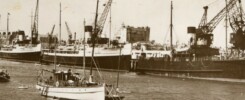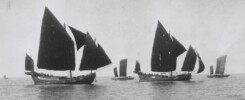From the mid eighteenth century Weymouth became the favoured holiday destination for the moneyed and aristocratic elites buoyed up by King George III’s decision to spend much of sixteen summers in the town before leaving for the last time in October 1805 a couple of weeks before the Battle of Trafalgar. With his son the Prince Regent casting his favours on Brighton and building his Pavilion there instead the shine started to go off the town after which the arrival of the railway in 1857 transformed the visitor profile to the mass market.
The Bank Holidays Act of 1871 included the provision of a statutory Bank Holiday on the first Monday in August and this helped to swell the market with Weymouth’s famed beach with its fine sand and tiny tidal range becoming packed to beyond bursting not least with the mass influx of holiday makers from the industrial heartland of the Midlands and the coal mining communities of South Wales, This provided great opportunities for the paddle steamers of Cosens and Co and even more so on the very busy Bank Holiday weekends.
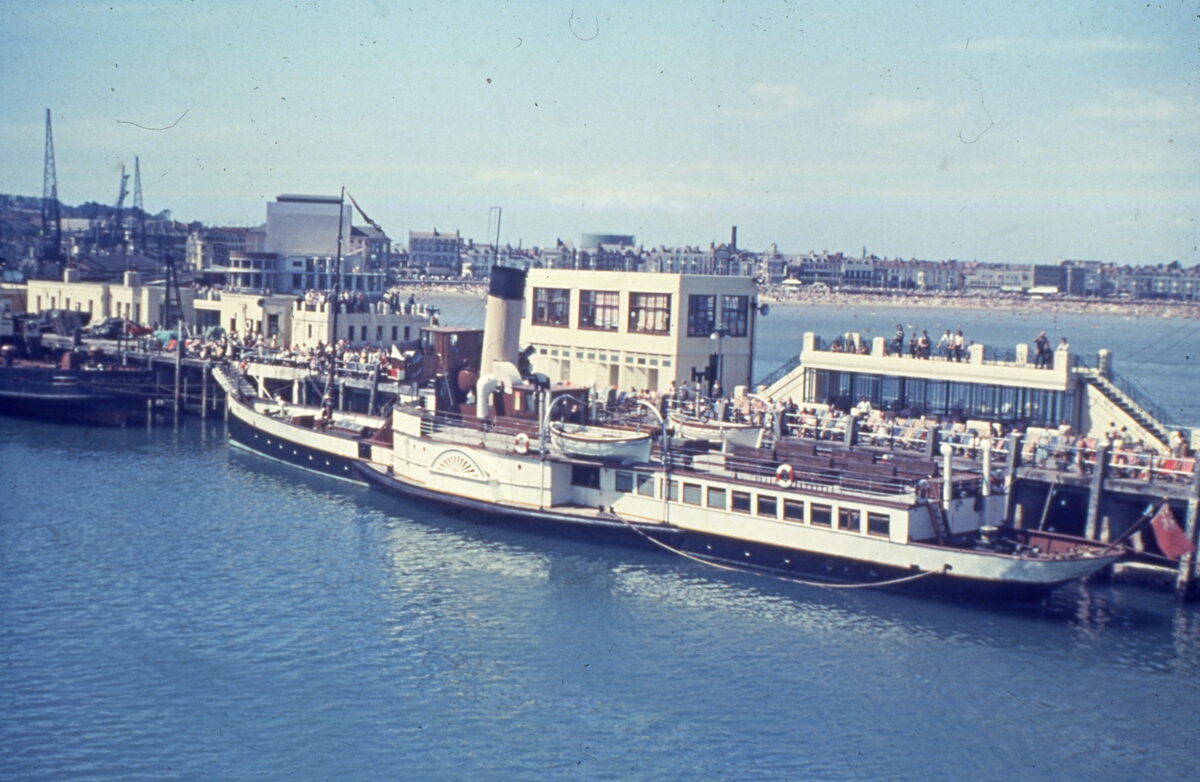
Over the years sometimes the August Bank Holiday Monday coincided with Navy Days at Portland and this enabled the Saturday, Sunday and Bank Holiday Monday paddle steamer timetable to offer half hour trips to pack in the punters sailing from the Pleasure Pier at Weymouth on the hour every hour from 12 noon to 6pm across to the stone jetty at Castletown at Portland just outside the gates of the Naval Dockyard.
Sometimes Navy Days were offered on the Whitsun Bank Holidays instead of in August and on these occasions Cosens had to find another imaginative roster to maximise their paddle steamer revenue. For example Bank Holiday Monday in 1959 came on August 3rd and without any Navy Days to accompany it. So Cosens’s Consul was rostered for a 10.45am Cruise across Weymouth Bay towards Osmington and Ringstead thence to Portland Harbour viewing H M Ships and Shipping. This was followed by one hour trips round Portland Harbour targeted at the mass market at 1.30pm, 2.30pm, 3.30pm and 4.30pm after which there was an early evening cruise to the Shambles Lightship back at 7.45pm giving just enough time to unload and load up again for the 8pm Showboat Evening Cruise with “Music, Fun and Games”. That’s a lot of trip options on which the passengers could be crammed in.
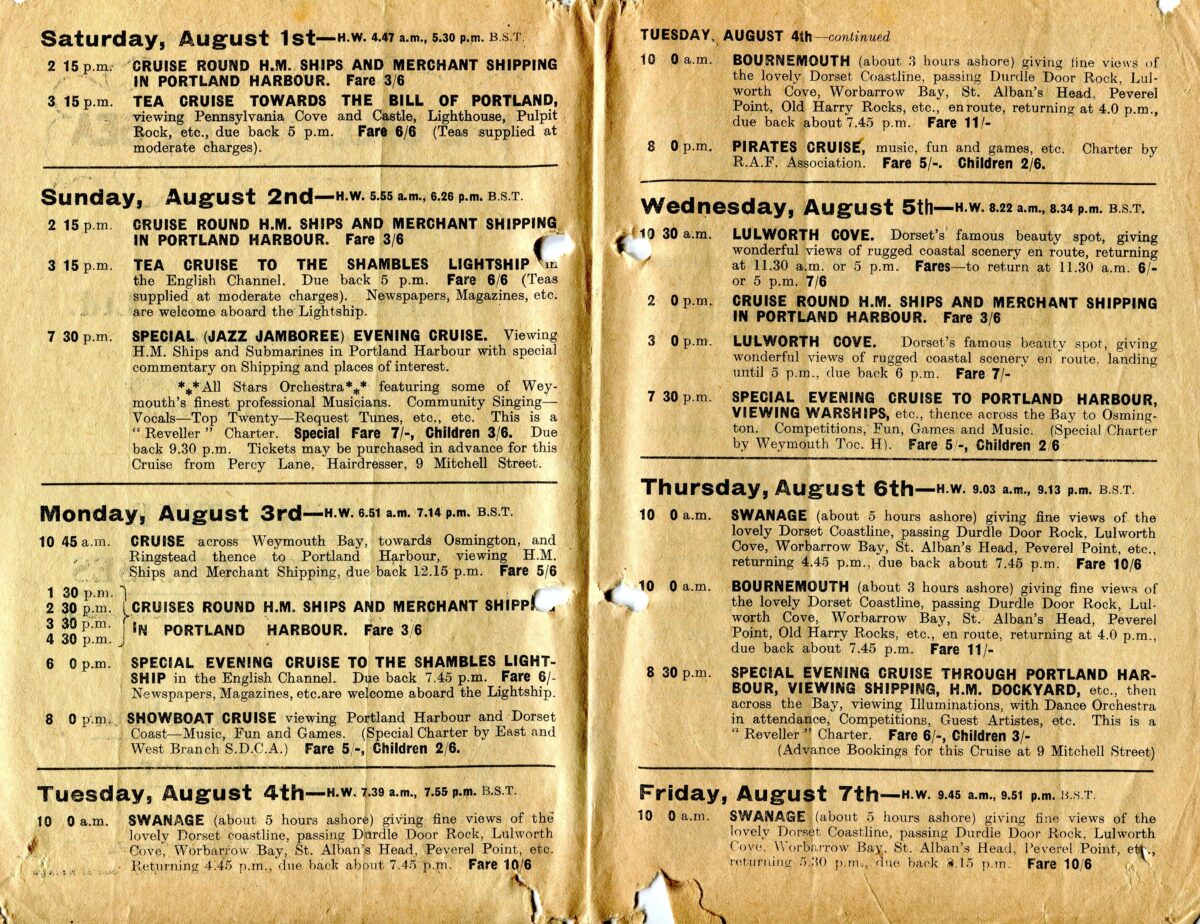
The following year in 1960 the same schedule was offered by Consul on the the Bank Holiday Monday August 1st. However the mass market business was by then already in decline. I don’t know how well Consul did on this day but I think that we can take it that all the trips were not a sell out as for the Bank Holiday the following year on Monday August 7th 1961 Consul offered a reduced schedule. There was a 10.45 Coffee Cruise in the morning which was followed by just two trips round Portland Harbour at 1.30pm and 2.30pm rather than the four run previously. They were followed by the longer cruise at 3.30pm rather than 6pm in 1960 and running across towards Osmington and Ringstead and then round Portland Harbour rather than the Shambles Lightship. The 8pm evening trip was now billed as a “Grand Illumination Cruise to view Weymouth’s Fairylike Illuminations”.

This reduced schedule was also run by Consul on Bank Holiday Monday August in 1962 but by then passenger loadings were in even steeper decline not helped by the particularly wet and windy weather that summer. 1962 turned out to be the last season that Cosens based a paddle steamer to operate from Weymouth and Consul was sold.
However all was not lost. Cdr Edmund Rhodes had bought Princess Elizabeth in 1959 and ran her from Torquay in 1960 and 1961 and then on the Bournemouth Swanage service in 1962 after which she spent the winter on a buoy off Hamworthy in Poole Harbour where she was very clearly visible from the train between Wareham and Poole. For 1963 he moved his operations once again and based the Lizzie at Weymouth to replace Consul.
The Lizzie did not start her season until Sunday June 30th and so missed the annual Navy Days which this year were at Whitsun. For Bank Holiday Monday August 5th Cdr Rhodes ran her on her usual roster starting with an 11am Morning Cruise followed by a 2pm trip round Portland Harbour, a 3pm departure for the Shambles Lightship due back 5.15pm and an Evening Cruise 7.45pm – 9pm “Viewing the many illuminated attractions”.

For 1964 Tony McGinnity brought Consul back to Weymouth to run in direct competition with Princess Elizabeth so with Navy Days this year back to the August Bank Holiday weekend both paddle steamers competed for the same business ferrying passengers between Weymouth and Portland. Princess Elizabeth followed the previous Cosens’s schedule with departures from Weymouth on the hour every hour from 12 noon until 6pm. Consul ran just three round trips leaving Weymouth at 2.30pm, 3,30pm and 4.30pm each day.

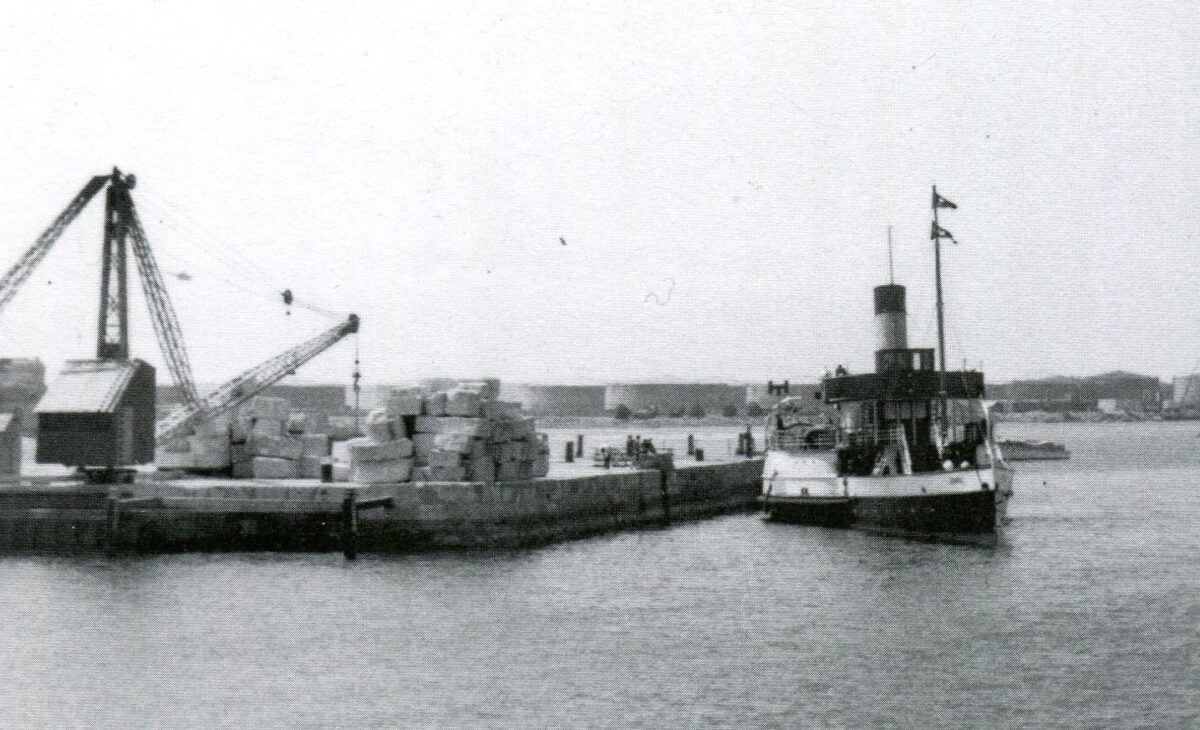
Consul used her previous berth on the end of the stone jetty at Castletown. Princess Elizabeth used the wooden landing stage on the eastern side of that jetty to the left of this picture.I
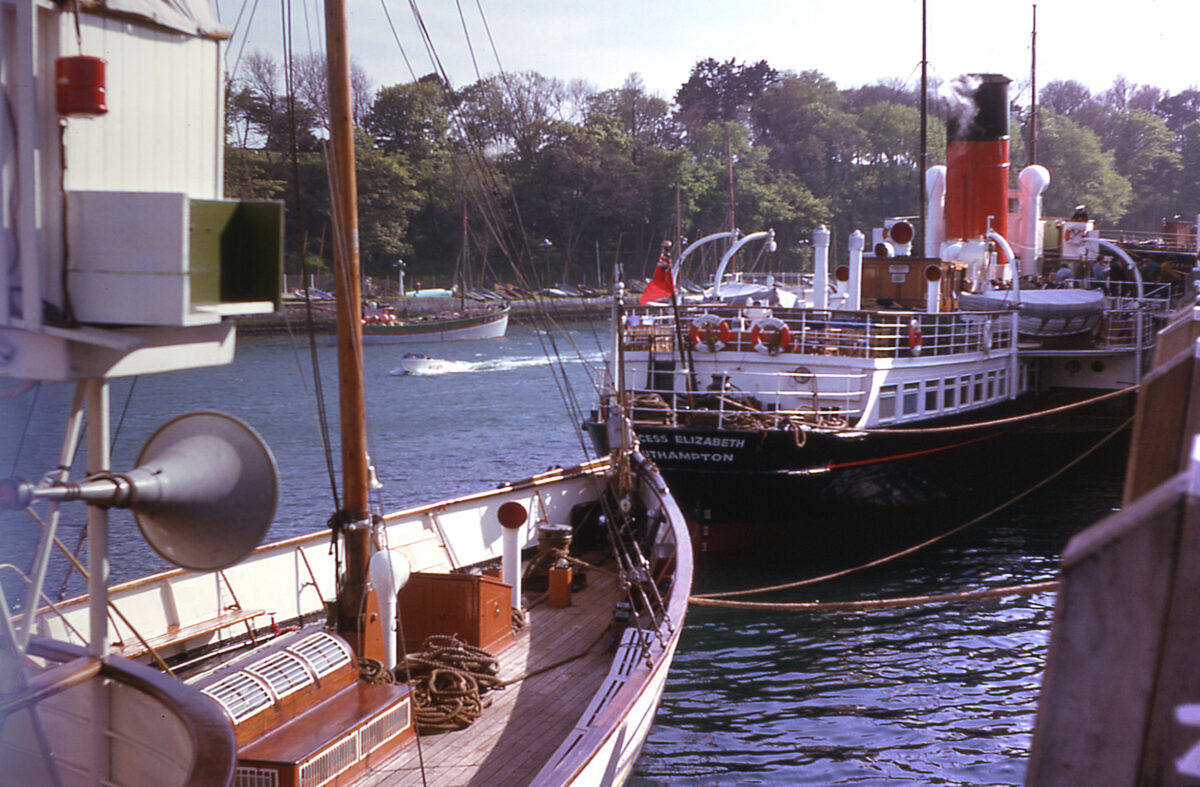
Two paddle steamers competing like this hurt both of them financially. And as an example of just how tight money became just look at the Consul’s steamer notice above. The season had started with professionally printed publicity material. By August the money was not there for that so they were printed off in house on the office Xerox machine.
In the end Tony pulled the plug on Consul’s season after her afternoon cruise to Lulworth Cove on Friday August 28th. The crew were paid off and Consul was laid up in her berth alongside Trinity Wharf next to the Town Bridge. Princess Elizabeth continued alone until Thursday September 17th and sailed up the harbour and through the Town Bridge to her layup berth in the Backwater at 4.30pm the following day. Captain Defrates asked me if I would like to come along for the ride. It was the first time that I had been up the harbour and through the bridge on a paddle steamer. I was thrilled.
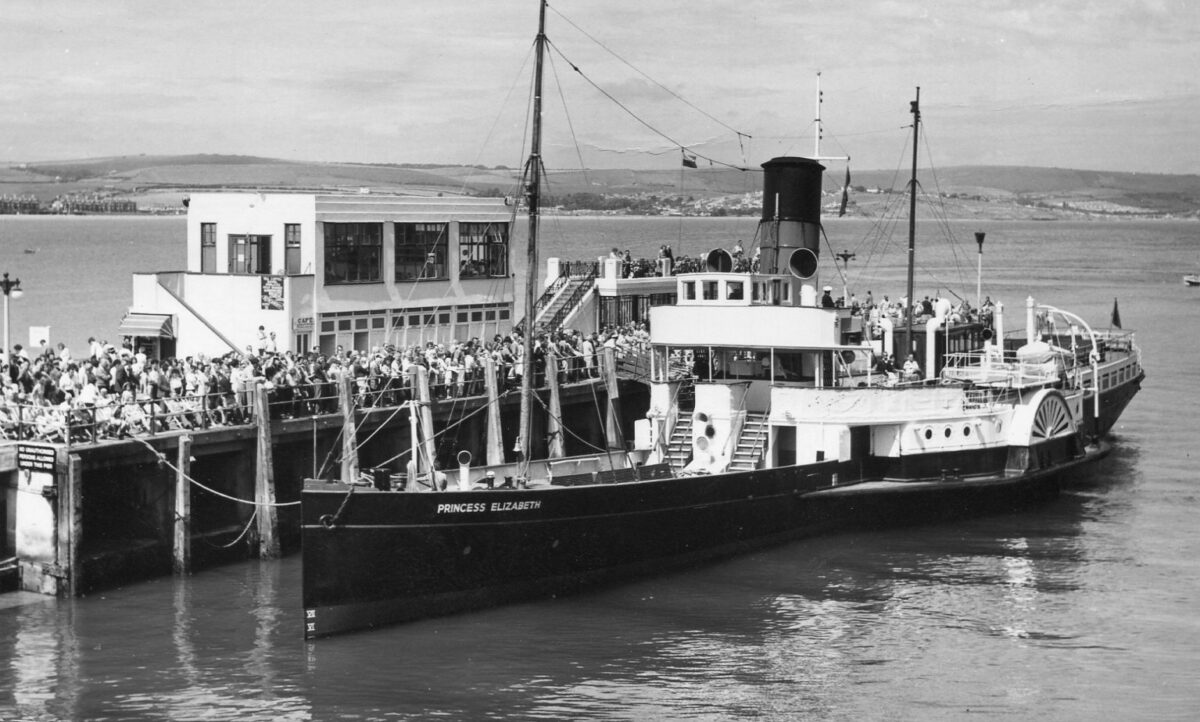
For 1965 the Lizzie had the field to herself but the competition with Consul had taken its toll on her finances too. For example Cdr Rhodes couldn’t afford to paint both sides of the ship in her refit at Southampton so opted to paint only the starboard side which was the one which the passengers saw as she always berthed at the Pleasure Pier at Weymouth starboard side to.
Also for 1965 their was an experimental change of date for the August Bank Holiday which was moved from the first to the last Monday in August as there was a feeling in some quarters that on the earlier date many people were on holiday anyway and so received no benefit from it. As a result Navy Days were announced for the new Bank Holiday weekend 28th – 30th August 1965 at both Portsmouth and Plymouth to take advantage of this but not at Portland. Maybe the Navy felt that it didn’t have sufficient resources to run three Navy Days over the same weekend. Whatever the case in the end Navy Days were advertised for Portland but unusually for only two days and in the middle of July instead of at a Bank Holiday.
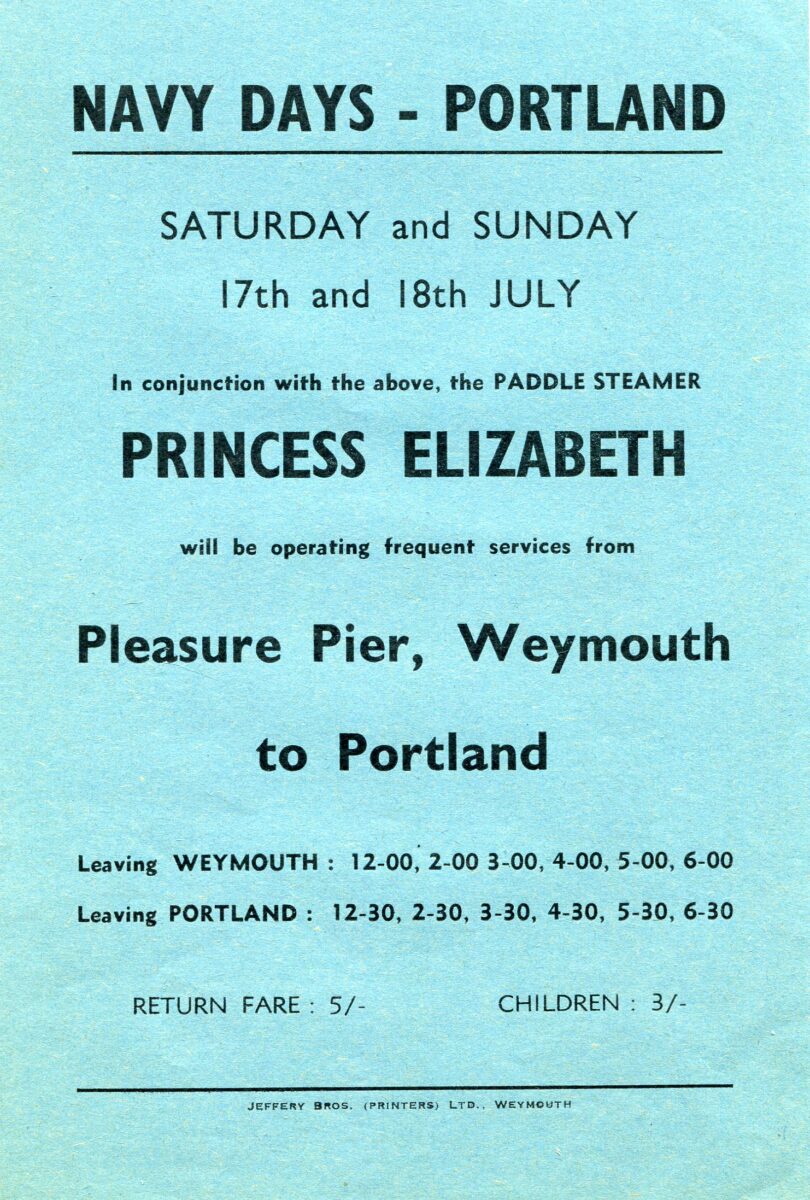
For this Princess Elizabeth once again ran to the old Cosens’s schedule with departures from Weymouth on the hour every hour from 12 noon to 6pm. I see from my notes that my fourteen year old self took the 12pm departure from Weymouth and came back on the 5.30pm from Portland on Saturday 17th July. My notes also record that it was on this day that Captain Woods, master of the PE, gave me an old copy of Reed’s Nautical Almanac which in those days was filled not only with all the tables necessary for coastal navigation but also had wonderful chapters on flags, seamanship, navigation, the Collision Regulations and much else. I loved that book.
Capt Woods was a man of strong opinions and could on occasion be quarrelsome. His relationship with Cdr Rhodes was sometimes fraught and I have a very clear recollection of a conversation he had with one of the more experienced seamen, Ken Moore who was the son of former Cosens’s Captain Pony Moore, in the wheelhouse in the run up to the August Bank Holiday. In that he tried to encourage Ken to lead a crew walk out if Cdr Rhodes did not concede to a demand for extra pay for working on a Bank Holiday weekend. I remember Ken saying that they needed to think of next year and Capt Woods replying that he didn’t think that there would be a next year. In that he turned out to be correct. But without Ken’s support, and through him the rest of the crew, the idea flopped and the crew worked on the Bank Holiday weekend without any special extra Bank Holiday pay with the Lizzie offering her regular schedule.
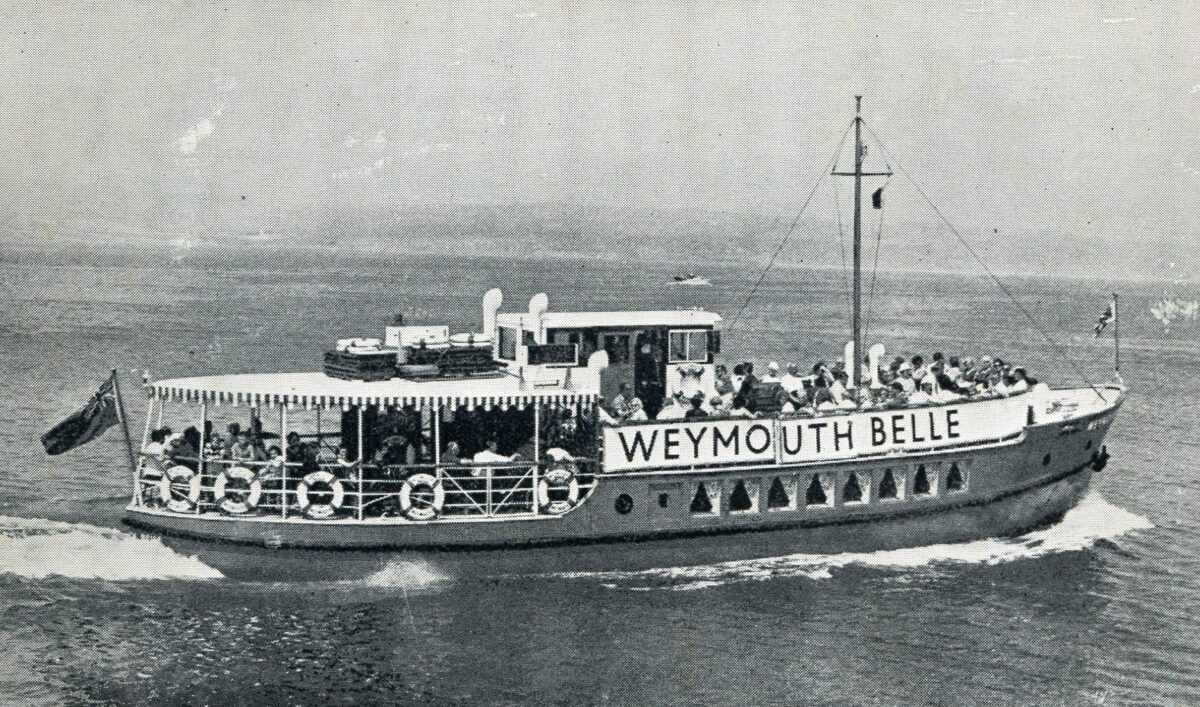
1965 was the last year a paddle steamer was based at Weymouth. She was replaced after that by the smaller 150 passenger vessel Weymouth Belle owned by R H Wills & Son on which I worked in my holidays from university. It was such a pleasure for me to get afloat again and spend those subsequent summers sailing in the wake of Consul and Princess Elizabeth round Portland Harbour, to Lulworth Cove, Portland Bill and, in my first season, to the Shambles Lightship as well. Weymouth Belle also continued the Cosens’s tradition of the on the hour every hour trips 12 noon to 6pm from Weymouth to Portland Navy Days over the Bank Holidays.
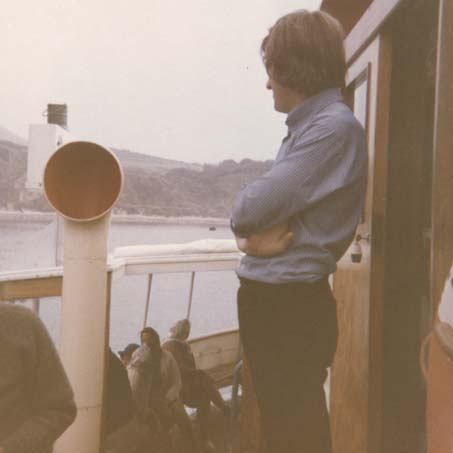
That is where I started to gain my nautical qualifications. The Weymouth Belle was the first vessel on which I ever sailed as mate and occasional relief skipper. And of all the qualifications I have ever acquired both before or since the most ornate document of the lot is that first Trinity House Pilotage Certificate issued to me on 18th April 1972. Gosh that is 51 years ago now. It came with copperplate handwriting filling in my details on a huge parchment sheet with an official red seal at the bottom made with proper old fashioned sealing wax. At the top it read “To all to whom these Presents shall come the Corporation of Trinity House of Deptford, Strond, send Greeting. Know ye that the Corporation of Trinity House as the Pilotage Authority for the above mentioned Pilotage District in Pursuance and Virtue of the powers given them for that purpose in and by the Pilotage Act 1913 and of all other powers them enabling having first duly examined John Hugh Megoran, aged 21 years, height 5ft 11ins, having light brown hair, green eyes and fair complexion being the Master/Mate of the ship called Weymouth Belle having a maximum draft of 6ft and of 50 tons gross whereof R & H Wills & Son Ltd are the owners and having upon examination found him to be a fit and competent person to pilot the said ship.” I felt really chuffed when I got that.
Tiny Point of Detail 1: Today pilotage is run by Competent Harbour Authorities who each have their own varying standards and requirements rather than by Trinity House which laid down the same standards, requirements and size of ship for which pilotage was compulsory at all ports nationwide.
Tiny Point of Detail 2: Parchment pilotage certificates are long gone. Now there’s a surprise. Today they are usually issued, if at all, as A4 computer print outs.
Tint Point of Detail 3: In 1971 the change of date for the Bank holiday to the last Monday in August was confirmed except in Scotland which still goes with the first Monday instead.
Tiny Point of Detail 4: Although the number of takers for Portland Naval Base Open Days declined there were still quite a lot of them wanting to go when I was working aboard the Weymouth Belle in the late 1960s/early 1970s. One issue for us was that all the passengers waiting to come home had to queue up on the Stone Jetty at Castletown which was normally used for loading Portland Stone onto ships. This jetty therefore had a thickish layer of Portland Stone dust all over it. This transferred itself onto the passengers’ shoes. They transferred it onto our previously immaculately scrubbed decks. So by the end of these days ferrying passengers to and from Portland Navy Days our decks looked as though someone had sprinkled a thick film of talcum powder all over them.
Tiny Point of Detail 5: It was on these Navy Days trips that I first noticed how a ship can handle in a different way when full rather than when empty. The Board of Trade in those days, and the Maritime and Coastguard Agency today, have a unit weight they assign per passenger. Scaling that up for Weymouth Belle comes to a full complement weighing in at just over 11 tons of passengers. So when full WB had 11 tons more weight aboard her than when she was empty. It was just so very noticeable doing the outward trip full and the return leg empty with WB much more sluggish to stop with all the weight of a full complement of passengers aboard. And much lighter on the helm when we had dropped them all off and went back empty the other way to collect another full load.
Tiny Point of Detail 6: The unit weight per person, used internationally and advocated by the International Maritime Organization, and as set out in the Maritime and Coastguard Agency’s MGN 347 (M) has been 75 kg. That means that if a passenger ship has a Passenger Certificate for, say, 235 passengers it can carry a weight of 235 x 75kg = 17,625 Kg and no more weight than that even if she has fewer passengers aboard than is stated as the maximum number permissible on her Passenger Certificate. Of course some passengers may be much lighter than 75Kg. Some may be much heavier. There may be some days when more passengers may be substantially over 75 Kg aboard. Maybe on other days less so. But it is the weight rather than the number of passengers which is the deciding factor in stability as far as the MCA is concerned. That is why the draft marks should always be checked on a passenger ship. The MCA has the power to prosecute a master if he sails his ship when it is down on its marks because the weight of passengers is too great even though there may be fewer passengers aboard than are permitted on the Passenger Certificate.
To take a look at MGN 347 (M) which sets this out click here: Microsoft Word – 347 (publishing.service.gov.uk)
Tiny Point of Detail 7: We are still fund raising for Phase 2 of KC’s rebuild. Do help if you can: Support Us – Kingswear Castle
Thank you.
Kingswear Castle returned to service in 2023 after the first part of a major rebuild which is designed to set her up for the next 25 years running on the River Dart. The Paddle Steamer Kingswear Castle Trust is now fund raising for the second phase of the rebuild. You can read more about the rebuilds and how you can help if you can here.
John Megoran

